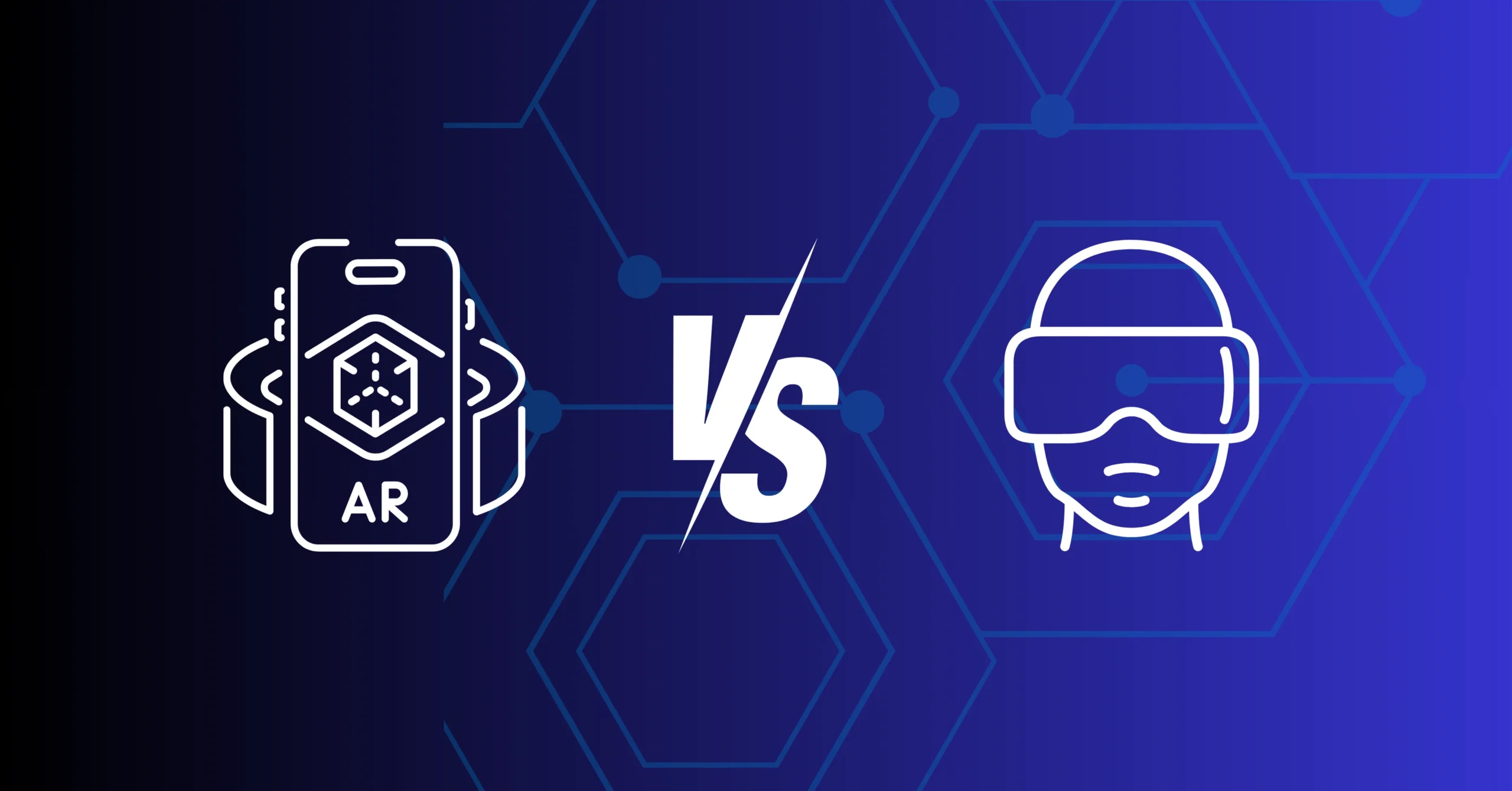The Surprising Simplicity of AR | Why It Outshines VR Technology
Published: 14 Mar 2025

In this article, we will explore how Augmented Reality stands out for its simplicity compared to Virtual Reality. You’ll learn how AR works with everyday devices like smartphones, while VR demands specialized and complex technology.
Let’s discover why AR is a more accessible and user-friendly option.
Augmented Reality Works With The Real World
AR blends digital elements with the physical world around us. It doesn’t take you completely out of reality but adds layers of digital content to what you see.
The magic lies in its simplicity, AR uses devices like smartphones or tablets to overlay visuals or information onto your surroundings. This minimizes the need for heavy equipment or total immersion.
Example | Think about Snapchat filters
They track your face and place fun animations onto your real-time image. Another great example is Pokémon GO, where you can see Pokémon creatures “appear” in your actual environment using your phone’s camera and screen.
Virtual Reality Needs Full Immersion
VR, on the other hand, creates a whole new world that is separate from our physical reality. To experience VR, you need to be fully immersed, which requires advanced technology.
Specialized hardware such as headsets, sensors, and motion trackers are essential for creating a believable and interactive virtual space.
Example | VR headsets like Oculus Rift or HTC
Vive offers immersive experiences, relying on high-end graphics, precise motion tracking, and powerful processors. These tools ensure the virtual world feels as real and interactive as possible.
Hardware Requirements
AR operates on everyday devices you already own, such as smartphones and tablets. Some AR experiences can also be enhanced by using lightweight smart glasses, like Google Glass, which add convenience without bulk.
These devices allow you to interact with AR content seamlessly without investing in heavy equipment.VR requires specialized and more advanced hardware.
You need devices like VR headsets (Oculus Rift or HTC Vive), motion controllers, and sometimes additional sensors to immerse yourself in VR fully.
Moreover, many VR systems rely on a high-performance PC or gaming console to handle the detailed graphics and smooth processing needed for a virtual environment.
Ease of Adoption
AR’s ease of adoption is another reason for its popularity. Since it works with devices already familiar to users, there’s no need for additional training or investment.
Simply download an AR app, and you’re ready to go. It’s accessible, intuitive, and quick to start using.VR usually demands more effort to get started.
Setting up a VR system involves purchasing specialized hardware and learning how to use it.
The technology often requires extra time for adjustments and understanding the controls, which can make it less convenient for new users.
Example | You can dive into an AR experience
With just your smartphone, no extra equipment is needed. However, enjoying a VR experience means buying a headset, setting it up, and taking time to learn how it all works.
Conclusion
Augmented Reality is easier to use because it works with everyday devices like smartphones or tablets. Unlike Virtual Reality, which needs advanced headsets and extra equipment.
AR blends digital content into the real world without much hassle. Its simplicity makes it more accessible and convenient for everyone.
Frequently Asked Questions
Check out these commonly asked questions to learn more about the differences, benefits, and applications of AR and VR.
AR relies on cameras and sensors already in smartphones, making it compatible and easy to use.
Check your device’s compatibility and update the app or operating system for optimal performance.
AR overlays digital visuals onto the real world using lightweight devices like phones or tablets.
Most AR apps need modern devices with strong processors and updated software for smooth operation.
AR requires less technical setup and uses familiar devices, making it easier to adopt for users.
Recalibrate the camera or restart the app to reset the AR tracking system.
AR is designed to blend digital content with reality rather than replacing it entirely.
Optimize device performance by closing unused apps and ensuring proper lighting in your environment.
Yes, AR apps are battery-intensive due to high camera and processor usage, so keep your device charged.
AR integrates with daily life, like navigation or shopping, without requiring specialized equipment.

- Be Respectful
- Stay Relevant
- Stay Positive
- True Feedback
- Encourage Discussion
- Avoid Spamming
- No Fake News
- Don't Copy-Paste
- No Personal Attacks

- Be Respectful
- Stay Relevant
- Stay Positive
- True Feedback
- Encourage Discussion
- Avoid Spamming
- No Fake News
- Don't Copy-Paste
- No Personal Attacks





